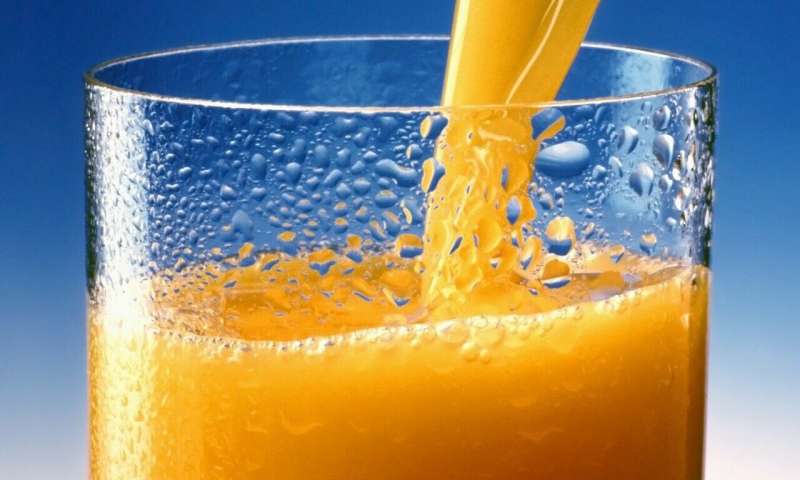
A team of industrial designers and architects and a psychologist at the University of Campania, in Italy, has tested some of the ways that the immediate environment can impact the taste of food or drinks. The group gave a conference presentation outlining their preliminary results last year at the 24th International Congress on Acoustics. They have since published their paper in the journal Food Quality and Preference. In their study, the group asked volunteers in different environmental settings to taste low-sugar orange juice.
Prior research has shown that many aspects of the Western diet can lead to weight gain and a wide variety of health problems. One element of the Western diet that has been singled out is sugar. Medical researchers have been looking for ways to reduce the amount of sugar that people consume. In this new effort, the research team wondered if changing the environment in which people consume a beverage such as orange juice might change their perception of how sweet it tastes and thus the amount they drink. To find out, they asked volunteers to sip low-sugar orange juice in several venues.
The idea behind the research came from recent work by others. For example, in 2017, one research team found that people thought chocolate samples tasted sweeter when listening to smooth music compared to rough music. Another group ran a study the following year and found that people tend to eat more food when listening to music with a low pitch.
In their experiment, the researchers found that people sitting in a warm environment with high-frequency background noise and a red decor perceived low-sugar orange juice as sweeter than when they sat in a restaurant with cool light, a green decor and a low-frequency tone playing in the background. They suggest that changing the environment in which people eat and drink might lead them to consume less sugar without actively trying.
More information:
Noor Fajrina Farah Istiani et al, The influence of multisensory indoor environment on the perception of orange juice, Food Quality and Preference (2023). DOI: 10.1016/j.foodqual.2023.105026
Journal information:
Food Quality and Preference
Source: Read Full Article